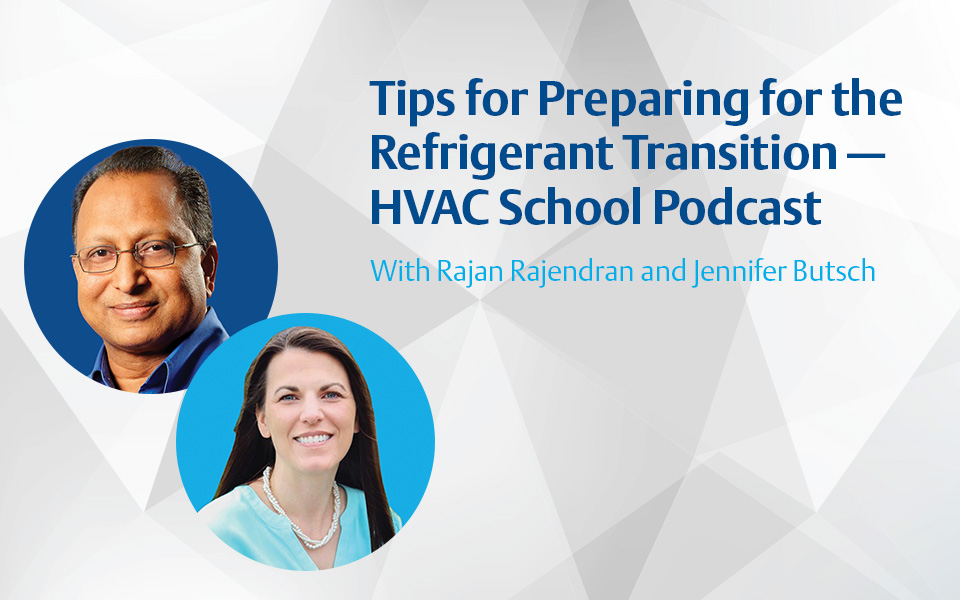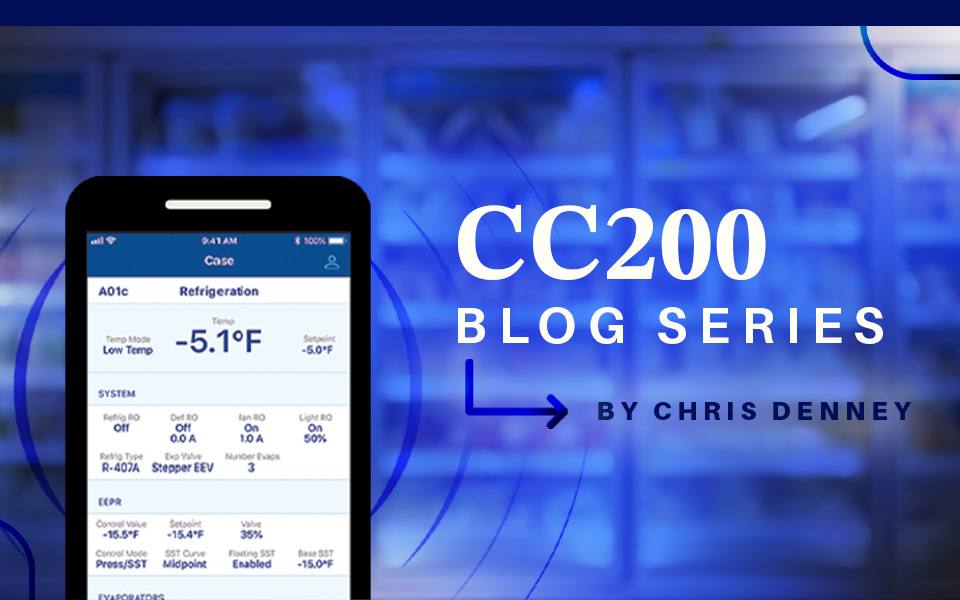*On June 1, 2023 Emerson’s Climate Technologies business became a new standalone company – Copeland. Though our name has changed, we are building on more than a century of HVACR innovation and industry leadership, and Copeland continues to offer the same products, industry stewardship, and learning opportunities you’ve grown to trust. Information found on this webpage posted before June 1, 2023 may contain our old name or branding, but you can be at ease knowing it was created with the knowledge and expertise of Copeland.
HVACR service technicians are at the front lines of the global refrigerant transition. As federal and state regulations take shape in the U.S., technicians and contracting companies have many questions about why this transition is underway and how to prepare for what’s coming. In a recent HVAC School podcast hosted by Brian Orr, Rajan Rajendran, Copeland’s global vice president of environmental sustainability and I answered some of the most pressing questions that technicians have about the changes in this dynamic refrigerant landscape.

As someone who has his finger on the pulse of the HVACR technician community, Brian knows the many challenges facing technicians as they help the industry transition to the next generation of lower-global warming potential (GWP) refrigerants. In our podcast discussion, he shared how many technicians are feeling the pressure of “bearing the burden” of execution and seeking guidance on how to prepare. Rajan and I were happy to have an opportunity to shed light on some of the key topics impacting technicians and our entire industry.
Keeping the refrigerant transition in proper context
Although many HVACR stakeholders are most concerned about which refrigerants will be used in the future, it’s important to think about the implications from a more holistic perspective. As Rajan explained, this was the spirit in which The Helix Innovation Center was conceived. Yes, the refrigerant GWP is an important factor, but it must also be considered among other variables, such as: system energy efficiency, consumer and/or retail trends, sustainability objectives and even the journey to achieving net-zero in commercial operations.
Similarly, Rajan discussed how the same holistic philosophy applies to equipment and/or system design, and how important it is to think beyond individual silos and to take a full ecosystem approach (i.e., focusing on the impacts of an entire system rather than simply evaluating individual component performance). Of course, the long-term implications to service technicians and end-users are chief among these considerations. Whether you’re considering the impacts of the refrigerant transition on an individual stakeholder, industry, equipment or system level, it’s crucial to consider the entire ecosystem and not just focus on one aspect.
Embracing the refrigerant continuum and staying informed
Another way to alleviate consternation about the refrigerant transition is to recognize that what’s occurring today is part of a continuing evolution and not necessarily a one-time event. As Rajan and I explained in the HVAC School podcast, this continuum has always been a factor in the ongoing evolution of HVACR technologies. When we look ahead to the changes coming to the commercial refrigeration, commercial AC or residential AC sectors, we’re anticipating a series of transitions over the next decade. The increasing global awareness of environmental sustainability will likely result in a more active period, leading to advances in refrigerant and energy-efficiency technologies.
So, what can technicians do now to prepare? Staying informed is the best way to gain a comfort level and a sense of preparedness. As Rajan stated, “Transitions are only a problem when you don’t know what’s coming.” Industry associations — such as the Air-conditioning, Heating, and Refrigeration Institute (AHRI) — equipment manufacturers, and emerging resources like the HVAC School podcast are all stepping up efforts to keep technicians educated and informed. For our part, Copeland’s E360 stewardship program continues to offer a series of webinars, articles and resources; Copeland Educational Services offers programs on next-generation refrigerant applications and safety best practices.
What’s on the regulatory horizon?
Perhaps more than any other HVACR industry stakeholder, service technicians are keenly interested in what regulations are coming soon that could impact them next. Although this topic alone could be the source of a full series of podcasts, Rajan and I were happy to provide Brian with the high points:
- The American Innovation and Manufacturing (AIM) Act has authorized the Environmental Protection Agency (EPA) to phase down the production of high-GWP hydrofluorocarbon (HFC) refrigerants. The next step is a 40 percent reduction in 2024, based on total GWP content.
- The EPA will soon release draft regulations to refrigerant manufacturers regarding how quota will be allocated for the 2024 reduction.
- Increasing demands for lower-GWP refrigerants will enable the emergence and wider adoption of A2L “lower flammability” refrigerants. Leak detection will become an even more integral part of A2L system safety.
- Natural refrigerants like CO2 and propane will continue to play expanding roles.
Rajan and I discussed these regulatory topics in greater detail in our latest E360 Webinar, and we encourage you to view it for more information about what to expect in the regulatory pipeline. To hear our conversation with Brian Orr on the HVAC School podcast, please visit their website.

Industrial Heat Pumps Deliver Sustainability, Lifecycle Benefits in Food and Beverage Industry
The food and beverage industry faces increasing pressure to reduce scope 1, 2 and 3 emissions. In...

10 Innovations Transforming Retail Operations
*On June 1, 2023 Emerson’s Climate Technologies business became a new standalone company –...

Simplify Refrigerated Case Servicing and Troubleshooting
*On June 1, 2023 Emerson’s Climate Technologies business became a new standalone company –...
